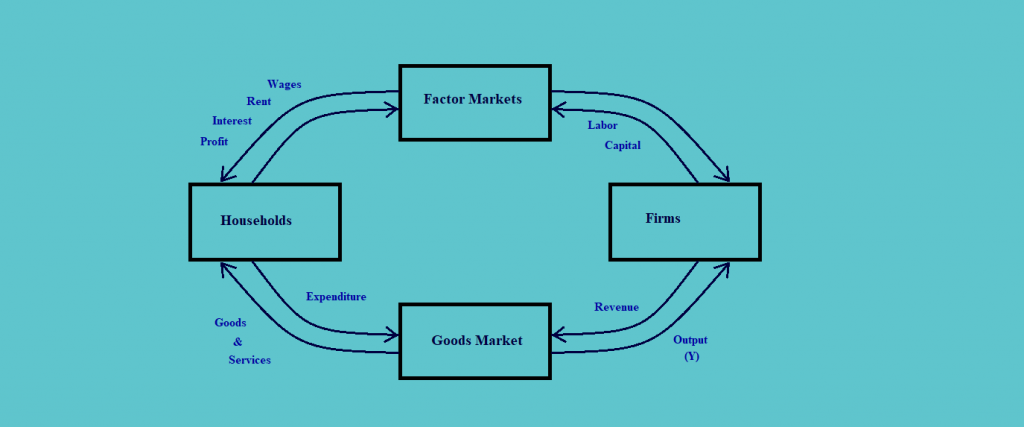a. The aggregate output of an economy is the market value of all the final goods and services produced in an economy during a period of time specified.
b. The aggregate income of an economy is the value of all the payments earned by the suppliers of factors used in the production of goods and services in a period of time.
c. The form of payments forming a part of the aggregate income includes:
i. Compensation to employees
ii. Rent (payment for the use of property)
iii. Interest (payment of the use of funds)
iv. Profit (return for the use of capital and the assumption of risk)
d. Thus the flow of funds within an economy is as follows:
i. Households can invest their money in funds.
ii. These funds then buy the shares of the firms.
iii. These firms produce the productive assets that generate incomes.
iv. The incomes so generated are accrued to the households.
v. Firms can also directly invest in the productive assets or may also do it indirectly through a firm.
e. The aggregate expenditure is the total amount spent on goods and services produced domestically in an economy.
This includes the amount spent domestically by the residents (i.e. total expenditure less imports) and by the foreigners on the domestically produced goods (i.e. imports).
f. The relationship between income, expenditure, and output can be explained with the help of the following diagram:
